全文HTML
--> --> -->激变[12,13]作为混沌系统中较为常见的全局分岔现象, 主要刻画了混沌吸引子和混沌鞍的不连续变化. 常见的激变包括边界激变、内部激变和合并激变. 边界激变是指混沌吸引子与吸引域边界上的不稳定周期轨道碰撞, 导致吸引子的突然消失. 内部激变是混沌吸引子与其所在吸引域内的不稳定周期轨道发生碰撞引起的. 合并激变是指两个及以上的吸引子同时与吸引域边界上的不稳定周期轨道发生碰撞, 合并形成新的吸引子. 尽管通过分岔图可以观测到激变现象, 但具体类型并不清楚, 需进一步绘制全局图进行判断. 近年来, 不少系统的激变现象均有所研究, 例如分数阶和单边碰撞系统[14—17].
当系统中存在多个吸引子时, 吸引域边界可以是光滑的, 也可以呈现出“你中有我, 我中有你”的分形结构. 如果吸引子的个数为三个及以上, 且边界上任一点的任意小领域, 覆盖三个及以上吸引域, 则称此域边界具有Wada特性. 随着系统参数变化, 域边界结构会突然发生改变, 称为域边界突变, 包括光滑-Wada域边界突变、分形-Wada域边界突变和Wada-Wada域边界突变等. 域边界突变作为混沌动力学的一个研究重点, 对于确定系统的整体结构具有重要的物理意义, 在非光滑系统和准周期强迫系统[18,19]中都有所研究, 但分形性使得动力系统的力学行为很难预测, 随着胞映射技术的发展, 域边界突变和激变现象的研究得到了突破. 其中经典的广义胞映射、图胞映射、插值胞映射等方法均可获得系统的全局信息[20—22], 但在刻画域边界时有一定的局限性. 复合胞坐标系方法通过对连续相空间的多级分割构造一个复合胞空间, 基于点映射的原理, 不仅可以获取动力系统的吸引子、吸引域和鞍等信息, 还能细化任意小区域, 在全局图中优化对域边界的刻画.
本文以SMA薄板动力系统为研究对象, 温度和外部激励的振幅为分岔参数, 在全局分岔图的基础上, 通过复合胞坐标系方法进一步分析系统在演变过程中出现的激变类型和域边界突变现象, 并通过对指定区域的细化, 展示域边界的分形特征. 研究结果在工程领域中对控制系统的动态响应有重要意义.
 图 1 SMA薄板的横向振动
图 1 SMA薄板的横向振动Figure1. Transverse vibration of SMA thin plate.
薄板的横向位移为w (x, y, t), 单位长度上的内力矩分别为Ux(x, y, t), Uy(x, y, t), Uxy(x, y, t), 其横向振动方程为[25]
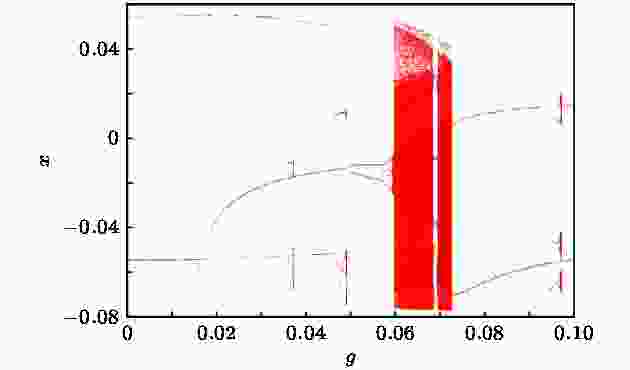 图 2 系统(7)随振幅g变化的多值分岔图
图 2 系统(7)随振幅g变化的多值分岔图Figure2. Multivalued bifurcation diagram of the system (7) with the variation of amplitude g.
在区域D = {(x, y)|–0.1 ≤ x ≤ 0.1, –0.12 ≤ y ≤ 0.12}上, 均匀划分1000 × 1200个胞, 利用复合胞坐标系方法获取系统的吸引子、吸引域和边界鞍等全局信息, 阐述g在0.0460到0.0727的范围内激变现象出现的机理. 为更直观理解全局图, 对以下图形做以下说明: 用△表示吸引子A, 不同颜色代表不同的吸引子; 吸引域用B表示, 不同吸引域颜色不同; S表示边界鞍; IS表示吸引域内部鞍; 下标表示吸引子、吸引域和内部鞍的个数, 例如A1, A2表示系统两个吸引子共存, B1, B2为其对应的吸引域.
2
3.1.边界激变
当g从0.0471增大到0.0472时, 发生两次逆的边界激变, 如图3所示. A5和A6表示周期为2的吸引子, A5与嵌在吸引域B1, B5边界的鞍S碰撞, A6和嵌入吸引域B2, B6边界的鞍S碰撞, 使得A5, A6和部分边界鞍S突然消失, 成为内部周期鞍IS1, IS2, 同时吸引域B5, B6消失, 吸引域B1, B2变大. 图 3 系统(7)的全局图 (a) g = 0.0471; (b) g = 0.0472
图 3 系统(7)的全局图 (a) g = 0.0471; (b) g = 0.0472Figure3. Global diagram of the system (7): (a) g = 0.0471; (b) g = 0.0472.
当g从0.0482变化到0.0483时, 系统再次发生两次边界激变, 两个周期1吸引子A1和A2与边界上的鞍S发生碰撞, 变为吸引域B5, B6的内部鞍IS5, IS6, 同时吸引域B1和B2消失, 如图4所示.
 图 4 系统(7)的全局图 (a) g = 0.0482; (b) g = 0.0483
图 4 系统(7)的全局图 (a) g = 0.0482; (b) g = 0.0483Figure4. Global diagram of the system (7): (a) g = 0.0482; (b) g = 0.0483.
当g从0.0491增大到0.0492时, 混沌吸引子A2与吸引域边界上的混沌鞍S发生碰撞, 发生边界激变, 变成新的更大的边界混沌鞍, 吸引域B2随之消失, 状态空间中为四个周期吸引子和混沌边界鞍共存, 如图5所示.
 图 5 系统(7)的全局图 (a) g = 0.0491; (b) g = 0.0492
图 5 系统(7)的全局图 (a) g = 0.0491; (b) g = 0.0492Figure5. Global diagram of the system (7): (a) g = 0.0491; (b) g = 0.0492.
3
3.2.合并激变
当g从0.0490变化到0.0491时, 混沌吸引子A2和A4不断接近吸引域边界上的混沌鞍S, 发生合并激变, 成为新的混沌吸引子A2, 与此同时吸引域B2, B4合并为新的吸引域B2, 如图6所示. 图 6 系统(7)的全局图 (a) g = 0.0490; (b) g = 0.0491
图 6 系统(7)的全局图 (a) g = 0.0490; (b) g = 0.0491Figure6. Global diagram of the system (7): (a) g = 0.0490; (b) g = 0.0491.
当g从0.0596变化到0.0597时, 混沌吸引子A1, A2与边界上的混沌鞍S碰撞, 发生合并激变, 变为新的混沌吸引子A1, 如图7(a)和图7(b)所示. 当g从0.0726增大到0.0727时, 发生逆合并激变, 混沌吸引子A1消失, 出现两个新的周期1吸引子A1, A2及混沌边界鞍S, 如图7(c)和图7(d)所示.
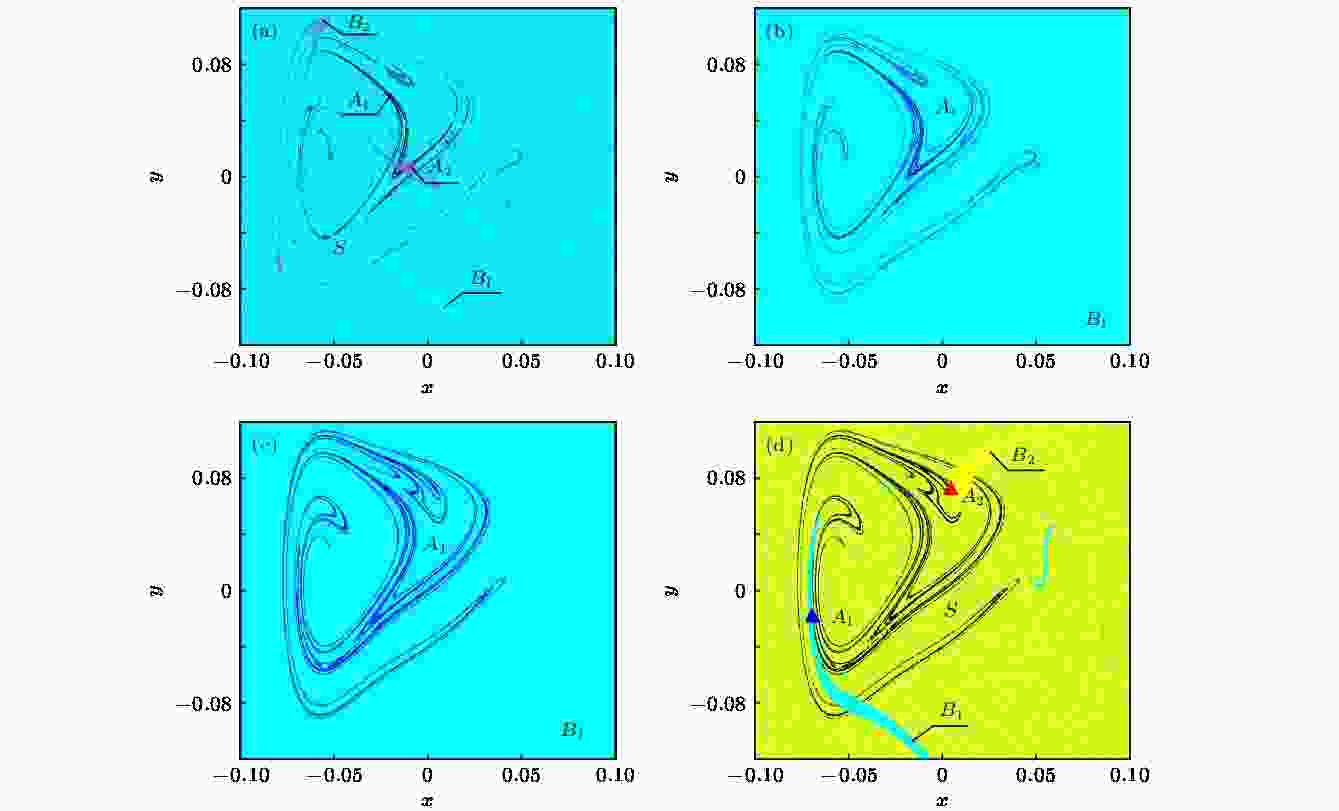 图 7 系统(7)的全局图 (a) g = 0.0596; (b) g = 0.0597; (c) g = 0.0726; (d) g = 0.0727
图 7 系统(7)的全局图 (a) g = 0.0596; (b) g = 0.0597; (c) g = 0.0726; (d) g = 0.0727Figure7. Global diagram of the system (7): (a) g = 0.0596; (b) g = 0.0597; (c) g = 0.0726; (d) g = 0.0727.
2
3.3.域边界突变
当g = 0.0460时, 系统存在三个周期1吸引子A1, A2, A3和嵌在吸引域B1, B2, B3边界上的混沌鞍S, 此时的域边界呈现出Wada特性. 当g增大到0.0461时, 系统新出现一个周期3吸引子A4, 此时的域边界由4个吸引域构成, 仍具有Wada特性, 系统发生Wada-Wada域边界突变, 如图8所示. 图 8 系统(7)的全局图 (a) g = 0.0460; (b) g = 0.0461
图 8 系统(7)的全局图 (a) g = 0.0460; (b) g = 0.0461Figure8. Global diagram of the system (7): (a) g = 0.0460; (b) g = 0.0461.
当g从0.0478增大到0.0479时, 吸引子的个数从6个变为7个, 为判断吸引子变化过程, 对区域v ={(x, y)|–0.075 ≤ x ≤ –0.055, 0.068 ≤ y ≤ 0.092}进行细化. 可以发现, 原周期3吸引子A4消失, 并在其附近出现两个新的周期3吸引子A4和A7, 如图9(c)和图9(d). 原吸引域B4分裂为新吸引域B4和B7, 且参数变化前后域边界均呈现Wada特性, 域边界结构更加复杂, 系统再次发生Wada-Wada域边界突变.
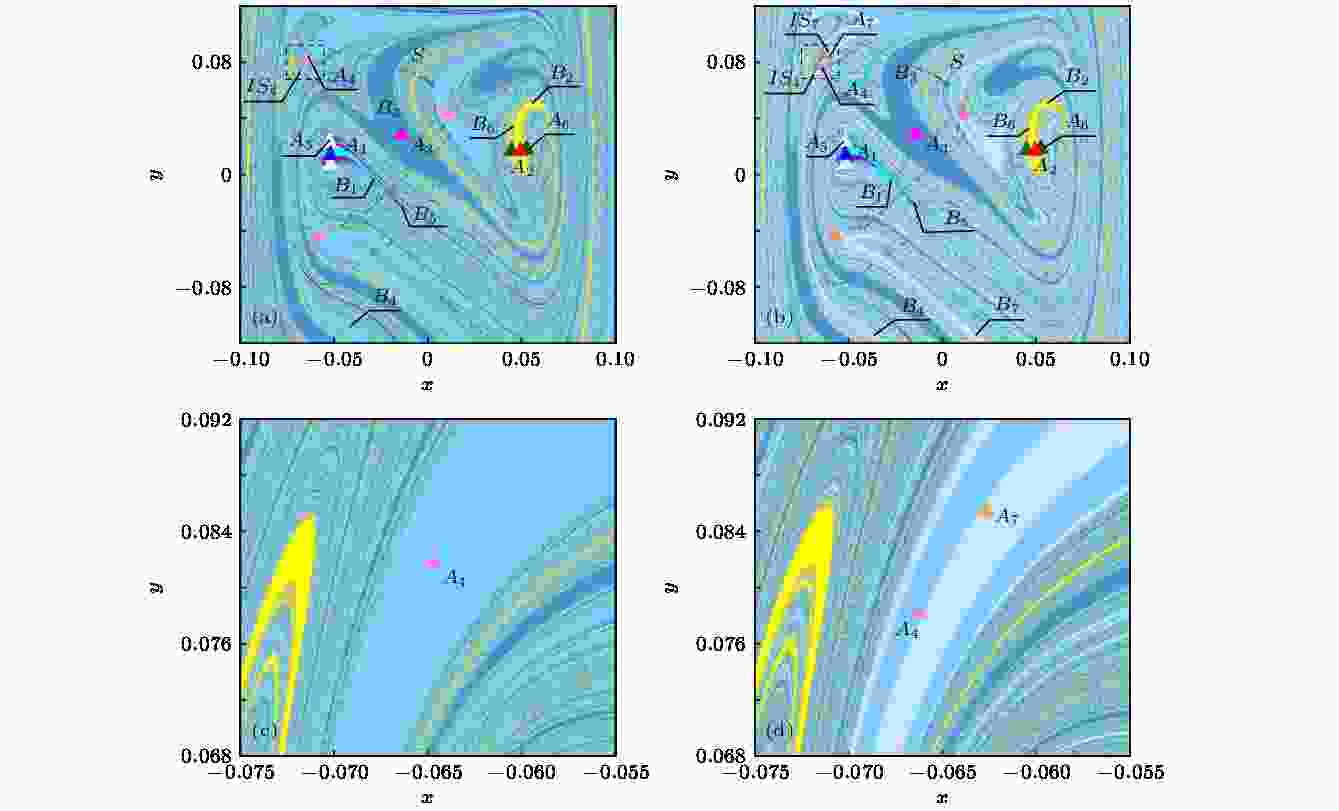 图 9 系统(7)的全局图 (a) g = 0.0478; (b) g = 0.0479; (c), (d) 分别对应于(a), (b)图的区域细化
图 9 系统(7)的全局图 (a) g = 0.0478; (b) g = 0.0479; (c), (d) 分别对应于(a), (b)图的区域细化Figure9. Global diagram of the system (7): (a) g = 0.0478; (b) g = 0.0479; (c), (d) the region refinement of panels (a) and (b).
当g = 0.0533时, 状态空间中有4个周期1吸引子共存, 此时域边界仍具有Wada特性. 当g增大到0.0534时, 周期吸引子A3和A4消失, 状态空间中仅剩2个周期1吸引子A1, A2, 此时域边界的Wada特性消失, 只呈现分形特性, 系统发生Wada-分形域边界突变, 如图10所示.
 图 10 系统(7)的全局图 (a) g = 0.0533; (b) g = 0.0534
图 10 系统(7)的全局图 (a) g = 0.0533; (b) g = 0.0534Figure10. Global diagram of the system (7): (a) g = 0.0533; (b) g = 0.0534.
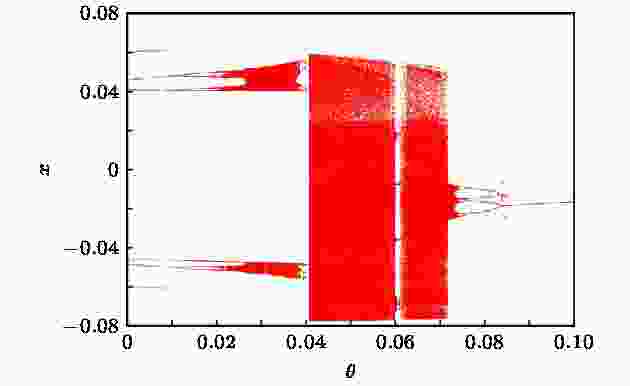 图 11 系统(7)随温度θ变化的多值分岔图
图 11 系统(7)随温度θ变化的多值分岔图Figure11. Multivalued bifurcation diagram of the system (7) with the variation of temperature θ.
2
4.1.边界激变
当θ = 0.8379时, 状态空间中两个周期1吸引子A1和A2共存, S为嵌入在分形域边界上的混沌鞍, IS1, IS2是吸引域B1, B2内部的混沌鞍. 当θ增大为0.8380时, 系统出现两个新的吸引子A3和A4, 内部鞍IS1, IS2消失, 系统发生两次逆边界激变, 如图12所示. 图 12 系统(7)的全局图 (a) θ = 0.8379; (b) θ = 0.8380
图 12 系统(7)的全局图 (a) θ = 0.8379; (b) θ = 0.8380Figure12. Global diagram of the system (7): (a) θ = 0.8379; (b) θ = 0.08380.
2
4.2.合并激变
当θ从0.4088变化到0.4089时, 周期2吸引子A1和A2同时与域边界上的混沌鞍S发生碰撞, 合并为一个新的混沌吸引子A1, 吸引域B1和B2合并成为新吸引域B1, 系统发生合并激变, 如图13(a)和图13(b)所示. 当θ从0.7182增大到0.7183时, 混沌吸引子A1消失, 出现两个新的混沌吸引子A1和A2, 以及嵌在域边界上的混沌鞍S, 系统发生逆的合并激变, 如图13(c)和图13(d)所示.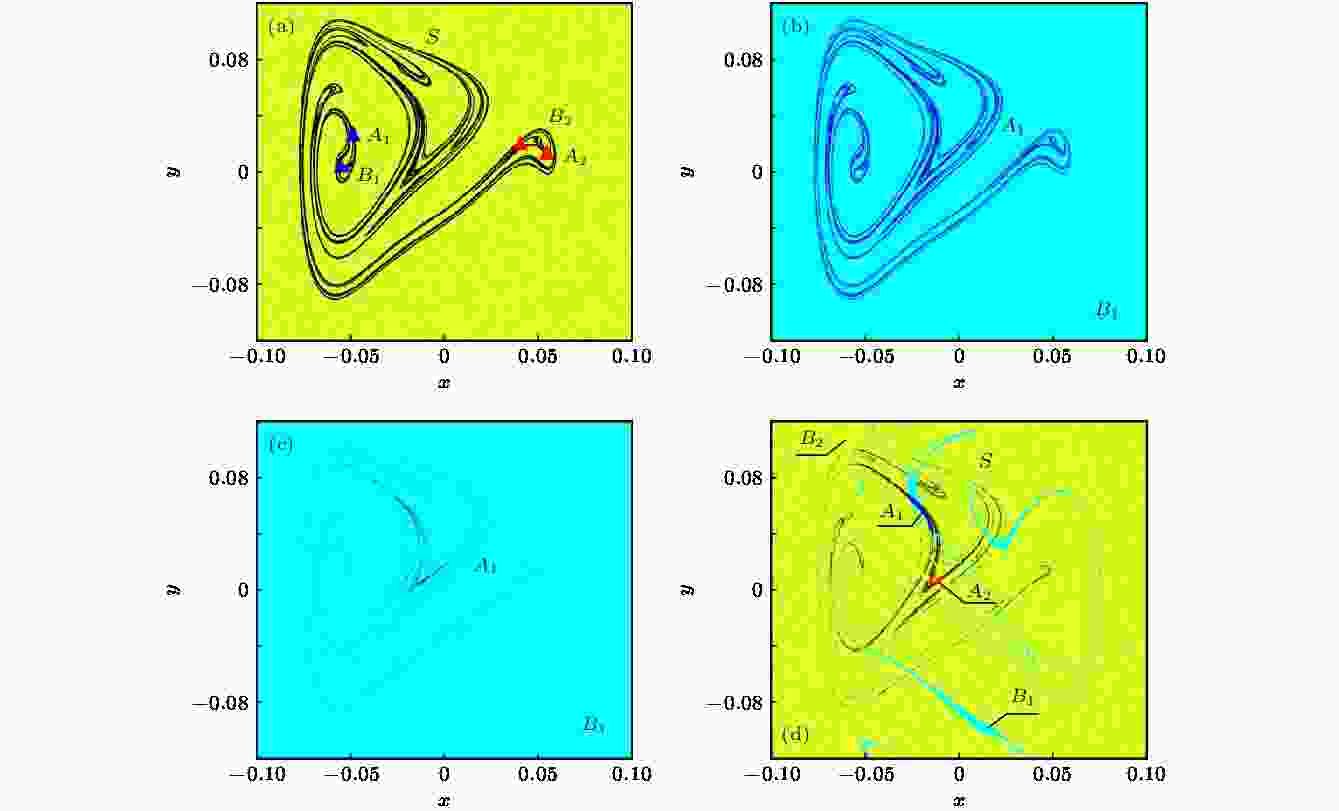 图 13 系统(7)的全局图 (a) θ = 0.4088; (b) θ = 0.4089; (c) θ = 0.7182; (d) θ = 0.7183
图 13 系统(7)的全局图 (a) θ = 0.4088; (b) θ = 0.4089; (c) θ = 0.7182; (d) θ = 0.7183Figure13. Global diagram of the system (7): (a) θ = 0.4088; (b) θ = 0.4089; (c) θ = 0.7182; (d) θ = 0.7183.
2
4.3.域边界突变
当g = 0.0950时, 状态空间中两个周期2吸引子A1, A2, 和两个周期1吸引子A3, A4共存, 吸引域边界呈现Wada特性. 当g增大为0.0951时, 两个周期1吸引子A3和A4消失, 吸引域边界变为由B1和B2构成的分形边界, 系统发生Wada-分形域边界突变, 如图14所示. 图 14 系统(7)的全局图 (a) θ = 0.0950; (b) θ = 0.0951
图 14 系统(7)的全局图 (a) θ = 0.0950; (b) θ = 0.0951Figure14. Global diagram of the system (7): (a) θ = 0.0950; (b) θ = 0.0951.
在一定的参数变化范围内, 系统呈现丰富的激变现象, 如周期或混沌吸引子与域边界上的周期鞍或混沌鞍发生碰撞的边界激变, 周期吸引子或混沌吸引子同时与边界上的混沌鞍发生碰撞的合并激变等. 当多吸引子共存时, 域边界会呈现分形结构, 并随着参数的变化, 发生Wada-Wada, Wada-分形和分形-Wada等域边界突变现象. 本文的研究结果对于通过控制温度和激励强度等参数, 调控SMA薄板系统的动态响应, 优化机械设备的变形及振动控制等问题上提供有效的分析手段.
